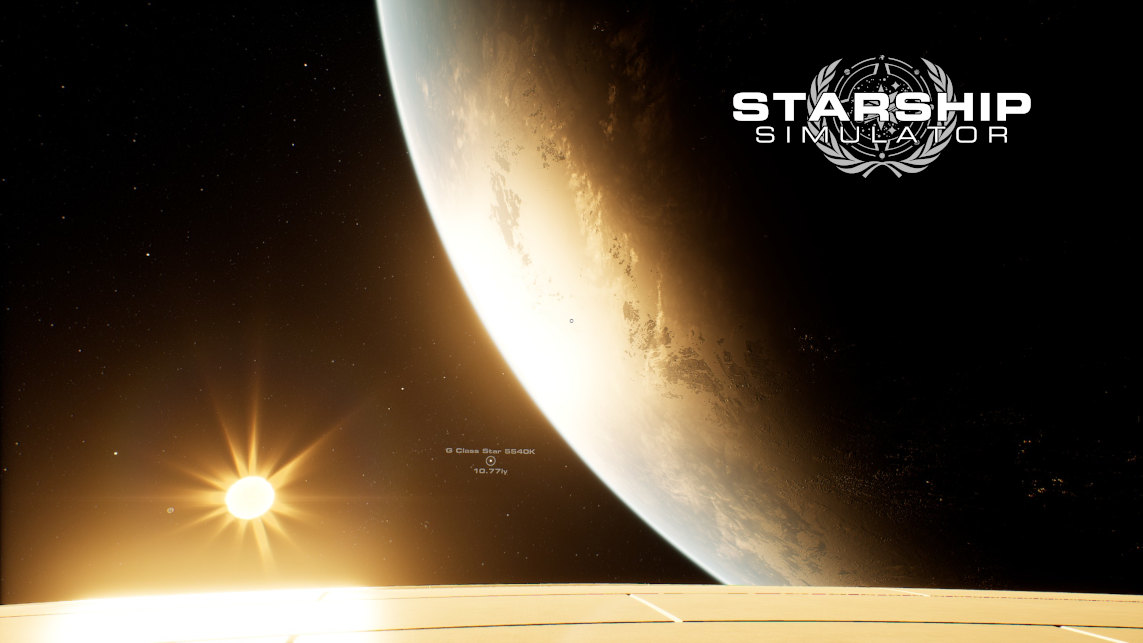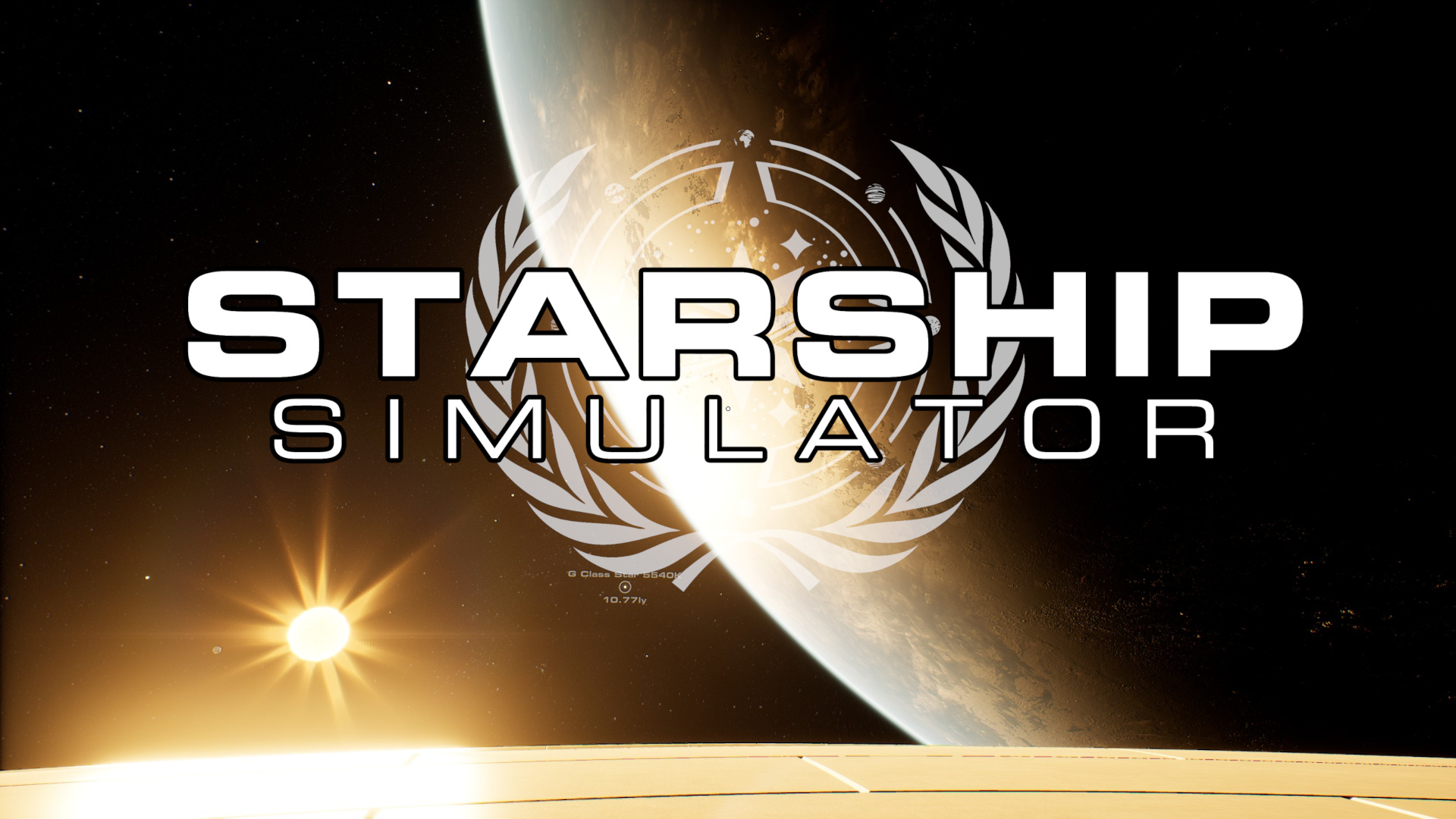It was great speaking with Dan and Claire Govier about their game and how things started out on their game development journey.
How and when did your studio come about?
Fleetyard Studios was established in 2020 by Dan Govier and his wife, Claire. Dan has been a passionate gamer since his childhood, and his fascination with space sims dates back to when he was just five years old, playing the original Elite on his Commodore 64 in the 1980s. Dan’s love for designing and building starships as a hobby persisted through the years, leading him to join the Stage 9 Enterprise D recreation project as a developer in 2017. Later on, in 2018, he co-founded Messy Desk Interactive and worked as a joint project lead on The Orville Interactive Fan Experience.
In 2020, Dan left Messy Desk to focus exclusively on Starship Simulator, which represents the culmination of his lifelong dream – a fully simulated and realistic starship capable of exploring a true 1:1 scale simulation of the Milky Way galaxy. Claire joined the Messy Desk team in 2018 as the Social Media Manager, responsible for handling the bulk of the organization’s interactions with third-party partners, including The Orville’s showrunners. She continues to serve as Fleetyard’s Social Media Manager, managing the studio’s social media presence and working with third parties in support of the studio’s goals. Additionally, Claire acts as the gatekeeper of feature creep, ensuring that Dan remains focused on the task at hand and doesn’t get sidetracked by interesting rabbit holes.
Also joining the team from Messy Desk are Mika Pieck and Scott Lowrie, who carry out the important task of Testing and Quality Assurance. The game’s music is composed by Eric E. Britt | Orchestorm, and the audioscape is being developed by Jose Luis Gonzalez Castro, who previously worked on Elite Dangerous and many other successful titles.
Tell us a little bit about the story behind your game?
Starship Simulator is a space exploration sandbox, where you serve as a crewmember aboard humanity’s first experimental deep space exploration vessel. Your ship’s primary mission is to explore the galaxy beyond Sol to find habitable worlds, perform scientific research, and make successful first contact with any alien species you may encounter. However, be warned that the galaxy is vast, mysterious, and filled with unexpected dangers lurking in the dark.
When we set out to make Starship Simulator, we asked ourselves a simple question: If we were handed the keys to a fully functioning starship, what’s the first thing we would do with it? The answer was unanimous: explore the galaxy and see what’s out there!
So we needed a number of core systems to turn this dream into reality;
A scientifically accurate 1:1 scale recreation of the Milky Way galaxy, filled with life and other interesting things to discover.
A fully simulated starship, built from the ground up as though it were a real vessel, with multiple decks and dozens of systems.
The ability to fly anywhere, in any direction, all in real-time without any transitions or loading screens.
A full crew to help run the ship, with their own roles, schedules, needs, and personalities.
These are lofty goals for what is essentially a brand new studio, but we were confident that our experience, determination and knowledge of Unreal Engine were enough to achieve success. Now, a little over 2 years later, we have most of the core systems bedded in and are working towards our second public tech demo. There’s still a mountain of work ahead of us of course, but we’re entering an exciting period where we can truly start fleshing out our galaxy with life.
We’re also keen for the game to become a valuable teaching tool, with players naturally learning about astrophysics and other related subjects through normal gameplay. For example, the game’s galaxy is structured the same as the real Milky Way, so players seeking out O Class stars will need to search for Open Clusters in the spiral arms. Or, when seeking out Earthlike worlds, they will need to look at the extent of a stars habitable zone to see if any planets are orbiting within that region. In a multiplayer game, you could even have a professional astronomer conducting a tour of the solar system to a group of connected students. We find the possibilities there very exciting.
From the beginning we have been committed to removing all barriers to entry, and will release the game for free on Steam. We rely on the generous support of our backer community to keep the game funded, and we’re planning to launch a Kickstarter campaign once our demo is sufficiently polished so that we can expand our team. We will also be releasing more starships over time as DLCs, some small, some large, and they will have a cost associated with them to help fund ongoing development.
Looking forward, in addition to continually fleshing out the galaxy with more content, we also have three single-player campaign DLCs planned. These will form a three-part story arc, and will focus on the player’s life as they live and work aboard a starship.
When will your game be released?
The game is currently in alpha and under heavy development, but we plan to release a second public tech demo in June 2023 as part of the Steam Next Fest. We will leave this demo live as we move into Kickstarter, which is planned for 2024. Subject to the Kickstarter being successful we might be in a position to hit Early Access in 2024, but realistically this is more likely to be sometime in 2025.
What platforms will your game be launched on?
Right now we are planning to launch exclusively on Steam for Windows PC & VR, as we leverage their servers for multiplayer matchmaking and DLC / achievement tracking. We will look at also releasing on the Epic Games store in the future. We do not currently have plans for a console port, but we’re not ruling it out.
Anything else you would like to mention to our readers?
We have a great and informative community on Discord if you want to keep updated on our progress.



